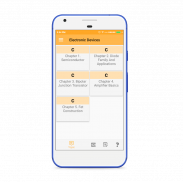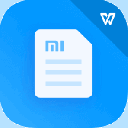






Electronic Devices

คำอธิบายของElectronic Devices
Notes of electronic devices for electronics engineering.It almost cover all important topics with their graphics chapter wise which are given below
Chapter 1. Semiconductor device
1. Semiconductor device
2. Theory of P-N junction
3. Temperature dependence and break down characteristics
4. Junction capacitances
5. Zener Diode
6. Varactor diode
7. PIN diode
8. LED
9. Photo diode
10. Transistors BJT
11. Field-effect transistor
12. MOSFET
13. Common-emitter Amplifier
14. The Transistor Amplifier
Chapter 2. Feedback Amplifiers
1. Feedback amplifier
2. Negative Feedback Amplifier
3. Voltage-series
4. Voltage shunt
5. Current series and current shunt feedback
6. Sinusoidal oscillators
7. L-C (Hartley-Colpitts) oscillators
8. RC phase shift
9. Wien bridge
10. Crystal oscillators
11. Power Amplifiers
Chapter 3. Switching characteristics
1. Switching characteristics of diode and transistor
2. Multivibrators
3. Bistable Multivibrator
4. Astable multivibarators
5. Clippers and clampers
6. Differential amplifier
7. Darlington pair
8. Boot strapping technique
9. Cascade and cascode amplifier
Chapter 4. Operational amplifier
1. Operational amplifier characteristics
2. Bias Current
3. Inverting Amplifier
4. non inverting amplifier
5. Differential amplifier
6. Instrumentation Amplifier
7. Log and antilog amplifier
8. Voltage to current and current to voltage converters
9. Comparators Schmitt trigger
10. Active filters
11. 555 timer and its application
Chapter 5. Regulated power supplies
1. Regulated power supplies
2. Series and shunt regulators
3. Current limiting circuits
4. Introduction to IC voltage regulators
5. Fixed and adjustable switching regulators
6. Switching Regulators
7. SMPS
8. UPS
</div> <div jsname="WJz9Hc" style="display:none">หมายเหตุของอุปกรณ์อิเล็กทรอนิกส์สำหรับอุปกรณ์อิเล็กทรอนิกส์ engineering.It เกือบครอบคลุมหัวข้อที่สำคัญทั้งหมดของพวกเขาที่มีกราฟิกบทที่ชาญฉลาดที่จะได้รับดังนี้
บทที่ 1. อุปกรณ์เซมิคอนดักเตอร์
1. อุปกรณ์เซมิคอนดักเตอร์
2. ทฤษฎีของสนธิ P-N
3. ขึ้นอยู่กับอุณหภูมิและลักษณะทำลายลง
4. ประจุสนธิ
5. ซีเนอร์ไดโอด
6. ไดโอด Varactor
ไดโอด 7. PIN
8. LED
9. ไดโอดรูปภาพ
10. ทรานซิสเตอร์ BJT
11. สนามผลทรานซิสเตอร์
12. MOSFET
13. Common-Amplifier อีซีแอล
14. ทรานซิสเตอร์เครื่องขยายเสียง
บทที่ 2 วงจรขยายผลตอบรับ
1. ผลตอบรับเครื่องขยายเสียง
2. ข้อเสนอแนะเชิงลบเครื่องขยายเสียง
3. แรงดันไฟฟ้าชุด
ปัด 4. แรงดันไฟฟ้า
5. ชุดปัจจุบันและข้อเสนอแนะปัดปัจจุบัน
6. oscillators รูปซายน์
7. L-C (ฮาร์ทลี่-Colpitts) oscillators
8. RC กะระยะ
9. สะพานวงเวียน
10. oscillators คริสตัล
11. เครื่องขยายเสียงเพาเวอร์
บทที่ 3. ลักษณะการสลับ
1. ลักษณะการสับเปลี่ยนและไดโอดทรานซิสเตอร์
2. Multivibrators
3. bistable Multivibrator
4. multivibarators astable
5. กรรไกรและ clampers
เครื่องขยายเสียง 6. ที่แตกต่างกัน
7. คู่ดาร์ลิงตัน
เทคนิครัด 8. Boot
9. น้ำตกและเครื่องขยายเสียง cascode
บทที่ 4 การดำเนินงานเครื่องขยายเสียง
1. ลักษณะการดำเนินงานเครื่องขยายเสียง
2. อคติปัจจุบัน
3. Inverting Amplifier
4. เครื่องขยายเสียงที่ไม่กลับหัว
เครื่องขยายเสียงที่แตกต่างกัน 5.
6. การใช้เครื่องมือเครื่องขยายเสียง
7. เข้าสู่ระบบและเครื่องขยายเสียง antilog
8. แรงดันเป็นปัจจุบันและปัจจุบันแปลงแรงดันไฟฟ้า
ทริกเกอร์ 9 เทียบมิต
10. ฟิลเตอร์ที่ใช้งานอยู่
11. 555 และการประยุกต์ใช้
บทที่ 5 การควบคุมอุปกรณ์ไฟฟ้า
1. อุปกรณ์ไฟฟ้าควบคุม
2. Series และแบ่งหน่วยงานกำกับดูแล
3. วงจร จำกัด กระแส
4. รู้เบื้องต้นเกี่ยวกับหน่วยงานกำกับดูแล IC แรงดันไฟฟ้า
5. คงที่และปรับเปลี่ยนหน่วยงานกำกับดูแล
6. ควบคุมการสลับเปลี่ยน
7. SMPS
8. ยูพีเอส</div> <div class="show-more-end">

























